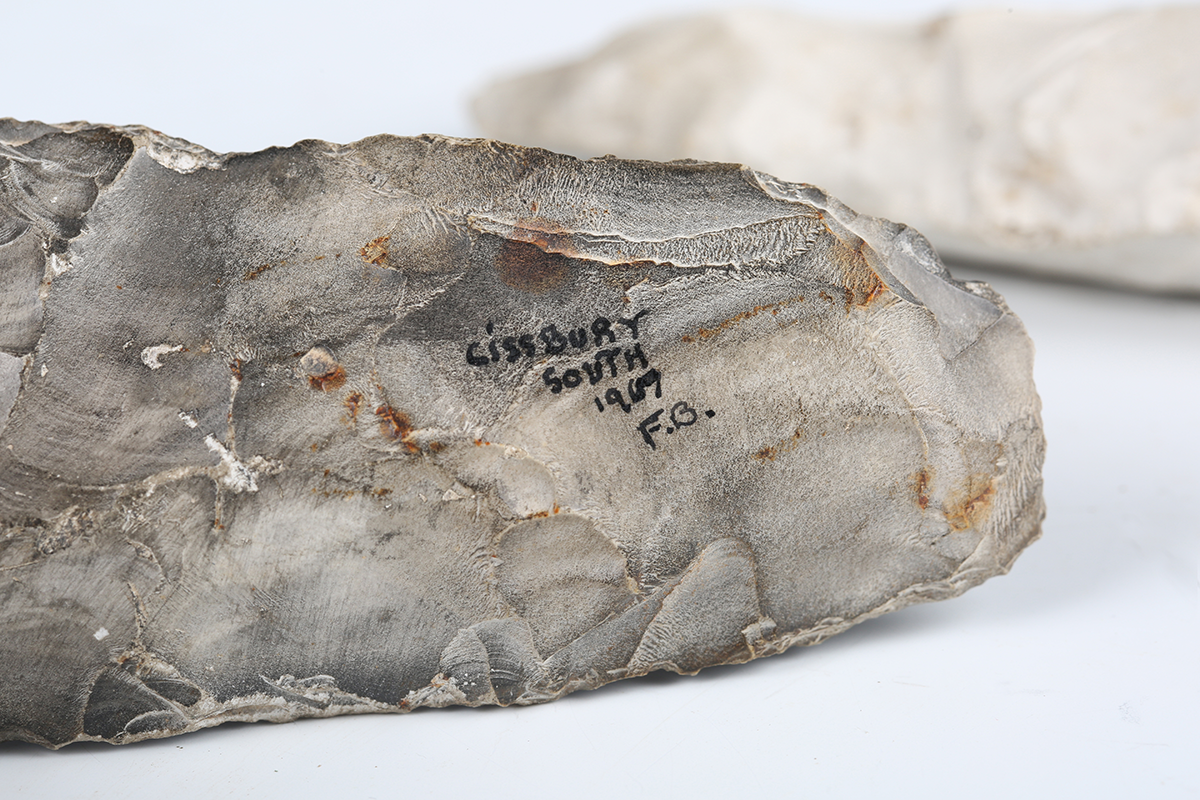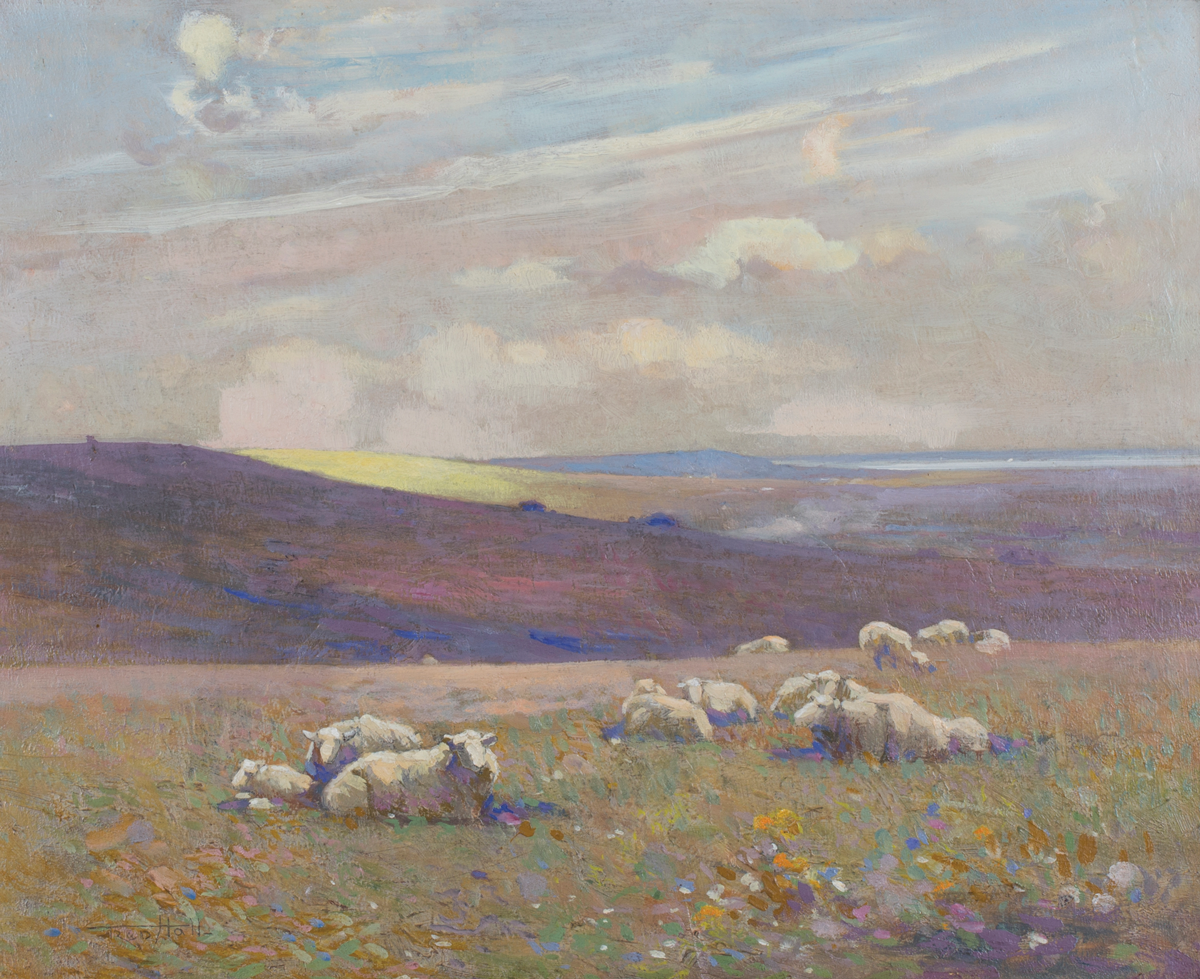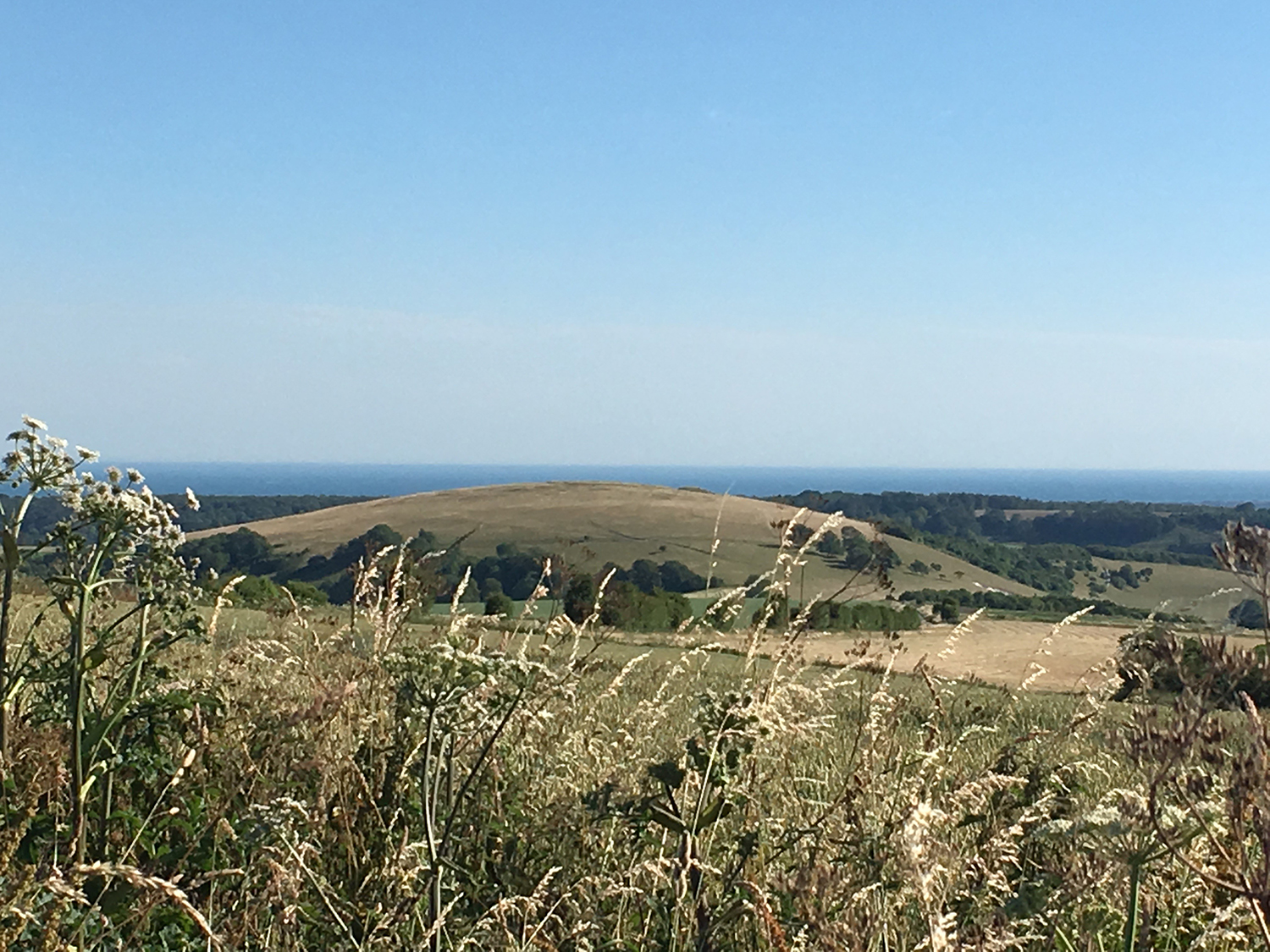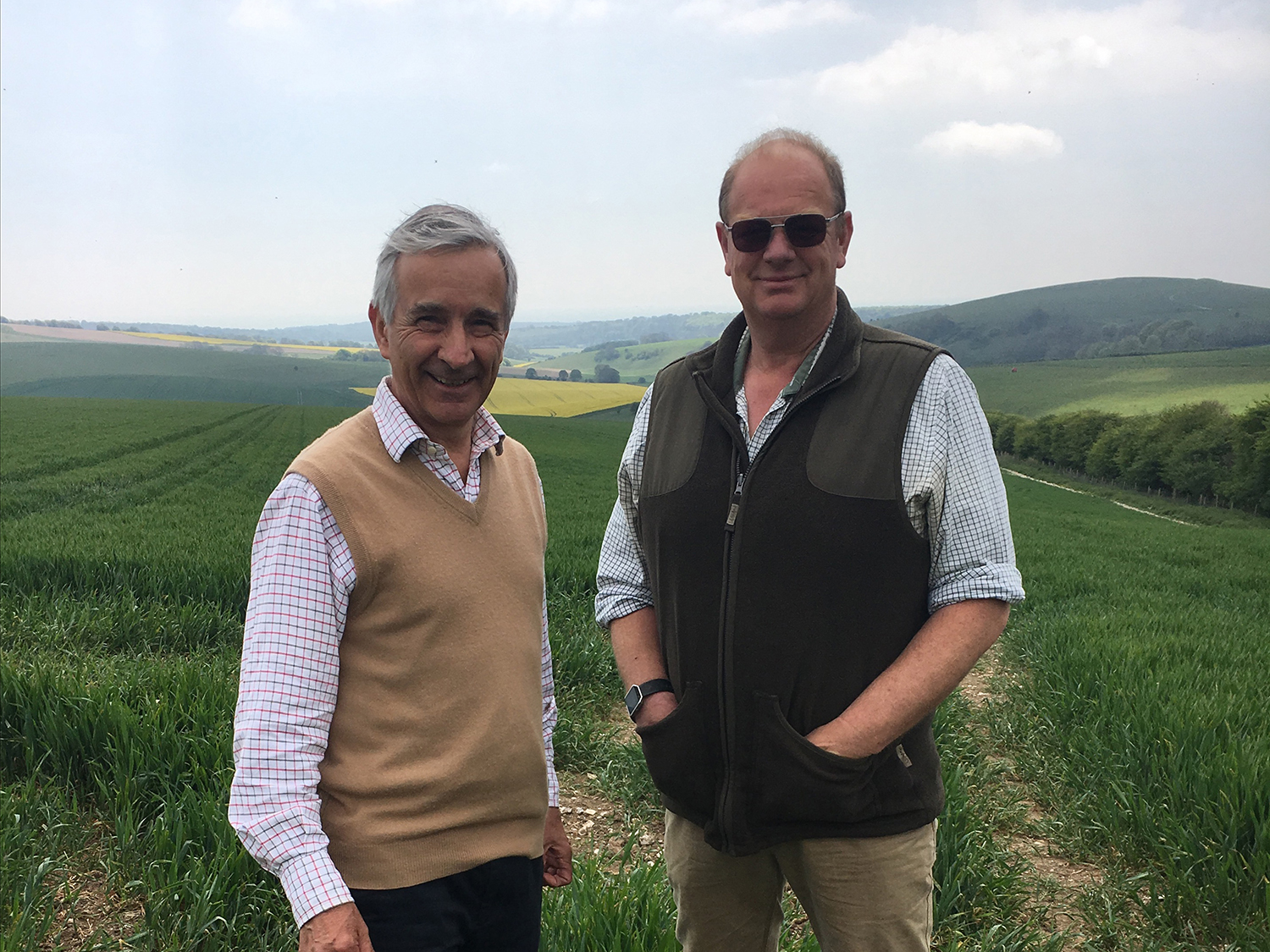
We set out from the top of Chantry Hill at the back of Storrington. Walking to the west we looked down towards the coast the scene bathed in an almost Provençal light. The sea’s azure blue was like a bold brush stroke defining the space between the landscape and the sky.
And as we walked a Red Kite circled over a field of grazing, happy sheep. The wild flowers bordering the chalk path were abundant and alive with insects, birds and butterflies.
It is impressive how the Angering Park Estate has been proactive over many years in balancing the need to produce food with the needs of nature and conservation. They work at scale investing in technology whilst articulating long term stewardship of the land.
They work hard to achieve a balance between maintaining the fertility of the land and producing food for the nation, with close attention to the preservation of nature. They have become increasingly sophisticated in analysing the environment in their fields and in the nature corridors of woodland and hedgerows which they are continuing to create.
As we turned to the north we walked down into the Chantry Hill Cross Dyke. We were greeted by a view I have known all my life with Storrington beneath us and the Weald and North Downs beyond. The late Bronze Age/Iron Age dyke is easily distinguishable. It is thought that these dykes were territorial markers and for defensive purposes. It is located on a north eastern promontory on the ridge of the Downs.

As we returned to the path to the south of the dyke we heard the cheery ping of a bicycle bell. As we turned to see who was approaching we were greeted by the smiling face of my oldest friend Robin Lenharth. We stopped and chatted reflecting how daft we were on our bikes in our youth Cycling up the downland tracks, long before mountain bikes were invented, we would delight in the cool breeze on our faces as we descended at speed, especially during the heatwave of 1976. We weren’t time poor in those days. My Dad would come home from work and have time to help me spray a ‘new’ second-hand bike blue in the evenings. We had less when I was growing up but perhaps we had more. Today I am in awe of the athleticism of Robin and my brother Ben who together cycle across the downs and the county and think that 80 miles is a decent ride! The Sussex Downs bless us all with such freedom.





